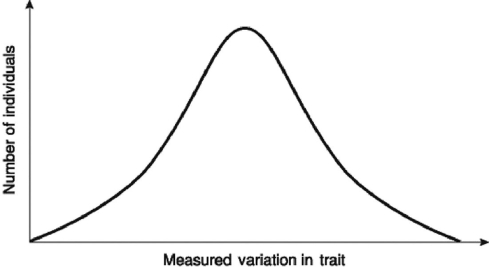 Figure 21.3
Figure 21.3
In a very large population, a quantitative trait has the distribution pattern shown in Figure 21.3. If the curve in Figure 21.3 shifts to the left or to the right, there is no gene flow, and the population size consequently increases over successive generations. Which of the following is (are) probably occurring?
1) immigration or emigration
2) directional selection
3) adaptation
4) genetic drift
5) disruptive selection
Definitions:
Coupling Ratio
in engineering, refers to the relationship between the input and output of a system, such as in transformers or gear ratios.
Fluid Couplings
A hydrodynamic device used to transmit rotating mechanical power; it has been used in automobile transmissions as a replacement for a mechanical clutch.
Torque Converter
A fluid coupling device that is used to transfer rotating power from a prime mover, like an engine, to a rotating driven load.
Vortex Flow
A flow pattern characterized by the rotation of fluid in a circular path around an axis.
Q1: Scientists discovered a fossil in China that
Q4: Which statement about variation is true?<br>A) All
Q6: The bicoid gene product is normally localized
Q14: The anticodon loop of the first tRNA
Q22: Lamarck's contribution to evolutionary theory was the<br>A)
Q23: Speciation<br>A) occurs at such a slow pace
Q45: Water molecules are able to form hydrogen
Q62: Which of the following are the strongest
Q68: Which of the following characteristics of plants
Q118: The nucleus of a nitrogen atom contains